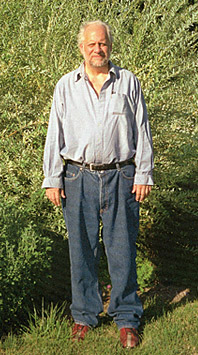Paring Back
“Taste and see that the Lord is good.”
-Psalm 34/35
When I visited rural Pakistan in 2003, I noticed that there were very few overweight people. On the contrary, most were skinny, including the elderly. At first I thought I was seeing the effects of poverty. Then I learned from NGO officials that the average rural diet was normal and adequate. What was this “average diet”?
Fifteen hundred calories per day per person, which is about half that of most industrial nations in the west and less than half the US average. Yet most folks walked everywhere and worked at physical jobs.
A few bags of flour, rice and lentils; a large tin of cooking oil; some dried fish meal; seasonings and spices; some nice looking locally grown vegetables (tomatoes, greens, eggplant, squash and onions); and an occasional portion of chicken or lamb—these comprised the household larder. Fried bread and other sweets or snacks might be included on a trip to town.
I was surprised to find that life expectancy was not so different from ours: a decade or so less, or mid 60s versus late 70s. However, infant mortality is very high by comparison, mainly because of livestock parasites rather than hunger or malnutrition. Perhaps that fluked the results; I saw many elderly. Water was precious more or less everywhere.
In other words, these people are tough. No one was lounging around. I conjectured that the concept of “junk food” was incomprehensible. Few smoke and I saw no one drink. Their world is family, village, town—or what we might insensitively call “tribe”—all resting in the context of the Islamic faith. The mosque is the sign of civilization, just like our church steeple.
Needless to say, there was little that I, for one, could describe as dynamic, few signs of change, and none of modernity. The preservation of stability and tradition is not merely intentional, it is sacred. There is no crime as we know it, although I could not be sure. There seemed to be none. I asked, and everyone was more or less surprised by the question. Granted, society there is militarized. However, it seemed that the soldiers are what we call police. Also, the rights and roles of women are entirely different and at odds with our notions.
Nevertheless, on reflection—and conscious of my gender—I thought that most rural areas of the US were not profoundly different. Besides the role of women, the only difference was everyone’s physical health, which brings me to “Paring Back”. We’re suffering an obesity epidemic.
Recently I saw a web article describing how dementia in the elderly might be delayed merely by making a substantial reduction in food consumption. This squares with the Harvard study from the 1960s that I mentioned in an earlier blog, which stated that, except for the passage of time, caloric intake is the single greatest cause of death.
Therefore, we might reconsider our perspective on food. At a wedding last fall, I noticed that the food wasn’t anything other than a decorative prop—the fact that we ate it was secondary. Much of it had symbolic value. So why shouldn’t all adult food be mostly ritual?
We might better view daily intake the same way that we view the consumption of medicine. Truly, for adults, food functions as a medicine. We have to replace cells, as well as stay warm, but the growth phase is long over. (Water and fiber are a different story.) This is probably why, in the contemporary West, rich food kills us. It should be seen as a premium luxury in adulthood, and enjoyed as such, much the way I have seen the Japanese do.
“Paring back” means that, while realizing that the steady consumption of food is the original human comfort, it also carries risk. In infancy and childhood, food has an essential reason; a baby has no illusions about his hunger. Much later in life, this hunger attains a largely psychological meaning. As such, it should be studied and understood.
Therefore, just as reading becomes a pleasure in adulthood rather than the necessity it is in childhood, so dining becomes purely pleasurable. The ancients realized this when they made gluttony a sin—it actually kills you.
Since the vegetable world provides such a range of flavors—from the jolting flavor of fennel to the howling burn of habanero pepper. Also, it is capable of great subtlety, and for this we have the highly overlooked and underpraised crisphead lettuce, of which Burpee’s Iceberg is the original. Its taste is delightful, despite its reputation. Only store bought lettuce suffers from being picked too early. Iceberg’s delicate sweetness should appeal to all lovers of subtle flavor and texture, such as devotees of sushi and other mild world cuisine.
My point is that we need not lose flavor and interest while “paring back”. The meaty taste and texture of many dried beans as well as seitan (sautéed or fried wheat gluten) substitute marvelously for meats and eggs. Focus on nutrition, reduce calories and you’ll live longer and less expensively, without making as great a dent in your lifestyle as you might think.
